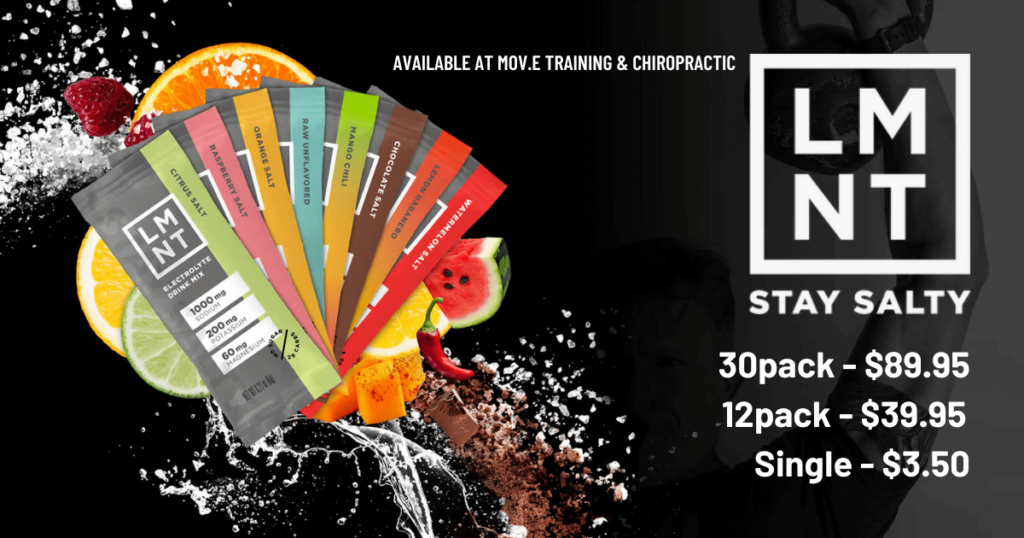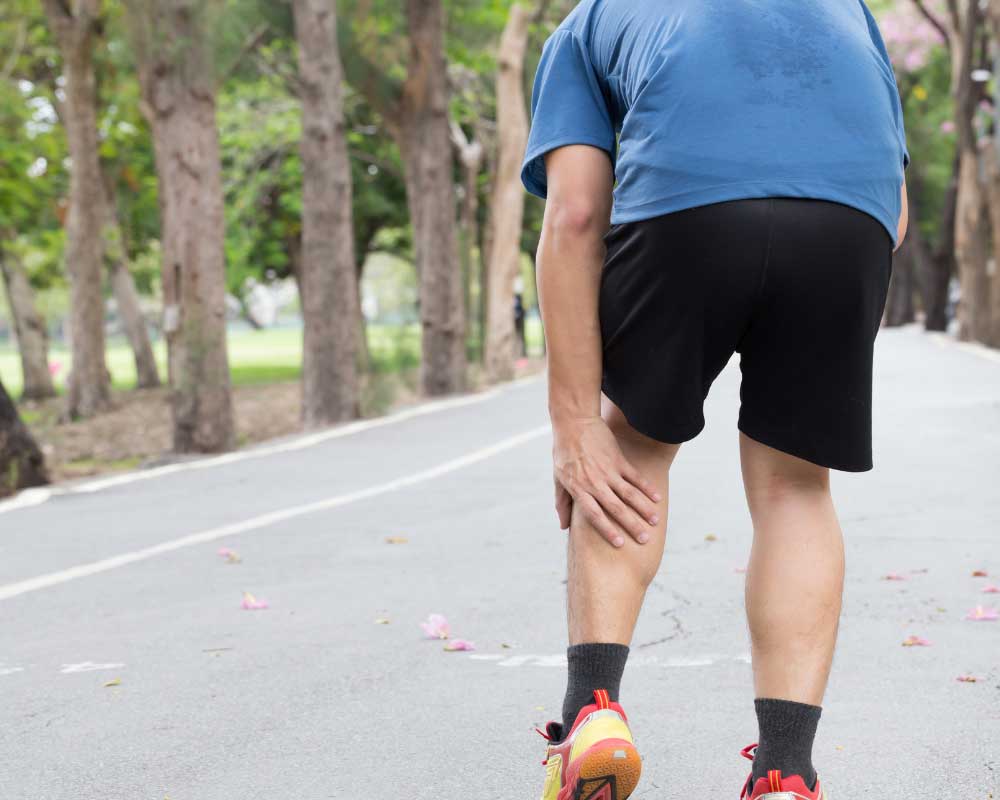Nothing gets your attention like a muscle cramp. It comes on quickly and hurts like hell.
Muscle cramps often occur in and around exercise, but not always. They can happen anytime. For example, many people get calf cramps in the middle of the night.
What causes muscle cramps? Is it dehydration, electrolyte deficiency, muscle fatigue, medication, or neuromuscular misfiring?
These are all potential causes. There’s lots of debate on this topic, but depending on the situation, different things can cause this painful symptom.
What is a muscle cramp?
A muscle cramp is a sudden, involuntary contraction or over-shortening of a muscle. While generally temporary and non-damaging, they can cause significant pain, and a palpable or visible hardening of the involved muscle.
Muscle cramps can last anywhere from a few seconds to several minutes, though some cramps can last for as long as 15 minutes or more. In some situations, cramps can occur in a series of short bursts before they eventually go away.
They are very common and can occur in any muscle. They are most common in the muscles of the lower extremities, like the calves, thighs, and feet.
It’s hard to predict when a muscle cramp is coming. The onset is rapid and the warning signs are vague and unreliable.
Nonetheless, researchers have pinned down a handful of muscle cramp risk factors. Let’s explore these risk factors before reviewing more specific causes.
Risk Factors For Muscle Cramps
Muscle cramps can occur in anyone, but several factors may increase the risk. These include:
- Age: Older adults are more likely to experience muscle cramps because muscle mass naturally diminishes with age. The remaining muscle can get overstressed more easily.
- Dehydration: Dehydration from high-intensity physical activity or hot weather may increase the risk of muscle cramps.
- Electrolyte depletion: Too little sodium, potassium, calcium or magnesium in your diet can contribute to leg cramps. Some diuretic medications prescribed for high blood pressure can also deplete these minerals.
- Pregnancy: Muscle cramps are common during pregnancy, likely due to increased weight and changes in blood circulation.
- Medical conditions: Certain conditions can increase the risk of muscle cramps, including nerve, thyroid, and liver disorders, diabetes, peripheral arterial disease, and kidney disorders.
- Overuse of a muscle: Using the same muscle for prolonged periods of time, such as when you’re doing heavy labor or exercising intensely, can lead to muscle cramps.
- Sedentary lifestyle or poor posture: Sitting for long periods of time or sleeping in an awkward position may result in muscle cramps.
- Certain medications: Some medications, including diuretics, asthma medications, statins for cholesterol, and drugs used in the treatment of Alzheimer’s disease, can increase the risk of muscle cramps.
It’s important to remember that anyone can get a muscle cramp under the right conditions, but these risk factors make cramps more likely.
What Causes Muscle Cramps?
Scientists don’t know precisely what causes muscle cramps. There are two prevailing theories:
- Cramps are due to a neurological disturbance
- Cramps are caused by improper hydration
The second theory, however, needs to be broken into two parts: a water part and an electrolyte part. So that’s a total of three potential causes. Let’s run through them.
Theory #1: Impaired neuromuscular control
In the 1980s, researchers realised that exercise-associated muscle cramps didn’t always happen in the context of heavy sweat loss. They began looking for other explanations.
One theory was that muscle fatigue triggers events that impair motor neurons. (Motor neurons are brain cells that control voluntary actions). This impairment jogs the central nervous system, which responds by activating (cramping) the muscle.
Some data on athletes support the neuromuscular theory. When you block the motor neurons in athletes prone to cramps, it takes a greater electrical stimulation to induce a cramp. So clearly the motor neurons are involved.
The theory, however, has holes. If muscular fatigue triggers this problem, why do only a small percentage of marathon runners develop cramps? They’re all getting fatigued. Only a few are cramping.
Theory #2: Dehydration
Muscle cramps are a well-documented dehydration symptom. But is dehydration (net water loss) a meaningful cause of muscle cramps during exercise?
Most hydration websites say yes. According to a 2016 review on hydration misinformation (read that again…. hydration misinformation – information based on zero research or evidence), about 98% of websites say dehydration causes exercise-associated muscle cramping.
But the truth is, there’s little evidence for this theory. One study showed that even significant hypohydration (over 5% of body water lost) did not increase the frequency of muscle cramping.
The real problem is overhydration.
To prevent dehydration, many athletes drink beyond their thirst, diluting blood sodium levels. This can cause cramping.
Theory #3: Electrolyte imbalances
Electrolytes are minerals that conduct electricity in your nervous system and keep your bodily fluids balanced. Relevant here: electrolytes are essential for muscle contraction and relaxation.
Deficiencies in the following electrolytes are the most common for causing cramps:
- Sodium
- Potassium
- Magnesium
- Calcium
Low sodium is probably the biggest driver of muscle cramping during exercise. If sodium lost through sweat isn’t replaced—and if the person over-hydrates with plain water—cramps are likely to occur.
The earliest evidence for low sodium causing muscle cramps comes from sweaty, crampy construction and steel mill workers in the 1920s. When these workers were given salt supplements, the incidence of cramps decreased.
More recent research found that American Football players with higher sodium concentrations in sweat were more likely to cramp. Kidney patients on dialysis also have more cramps when they’re given low-sodium fluids. When electrolytes are normalised, the cramps diminish.
Natural Remedies For Muscle Cramps
Exercise smart
Muscle fatigue is a risk factor for muscle cramping. This doesn’t mean you shouldn’t tire out your muscles. (That’s how you get stronger). It just means that you should be wary of pushing your limits. Adequate recovery protocols between training sessions will also decrease your risk of muscle injury.
Stretching and massage, and (maybe) heat
Some research suggests that shorter stretch times are a risk factor for muscle cramps. Another study found no link.
At MOV.E Training & Chiropractic we are a fan of dynamic stretching (aka, moving around in different positions) over static stretching. Dynamic stretching builds mobility along with flexibility.
Heat and massage may also alleviate cramps. This could be a placebo effect, but getting a massage can’t hurt, even if no evidence suggests that it will alleviate cramps.
Increase dietary electrolytes
Whenever you can, consume electrolyte-rich foods to prevent deficiencies and cramping.
- For potassium: green leafies, avocados, meat, and potatoes
- For magnesium: green leafies, nuts, and legumes
- For calcium: dairy, cruciferous vegetables, and fish
- For sodium: the salt shaker
If you follow a keto diet, you’ll have to work extra hard to reach the evidence-based targets of 4–6 grams sodium, 3.5–5 grams potassium, and 400–600 mg magnesium without eating carbohydrates. This means lots of spinach, kale, and salt.
Hydrate with electrolyte water
To prevent cramps, add electrolytes to your water when you rehydrate. Consider the evidence:
- Salt supplements decreased cramps in early 20th century workers.
- Men drinking an oral rehydration solution (with electrolytes and fluids). after hot exercise were less likely to cramp than men drinking plain water.
- Football players who drank electrolyte-enhanced sports drinks developed fewer cramps than those who drank plain water.
- Drinking pickle juice (high in sodium) prevents muscle cramps in dehydrated people.
But you don’t have to glug pickle juice if that doesn’t sound appetising to you. Just add salt to your water, or mix in a stick of Drink LMNT (Available at MOV.E Training & Chiropractic). Sip to thirst throughout the day. Your chance of cramping just decreased dramatically.





